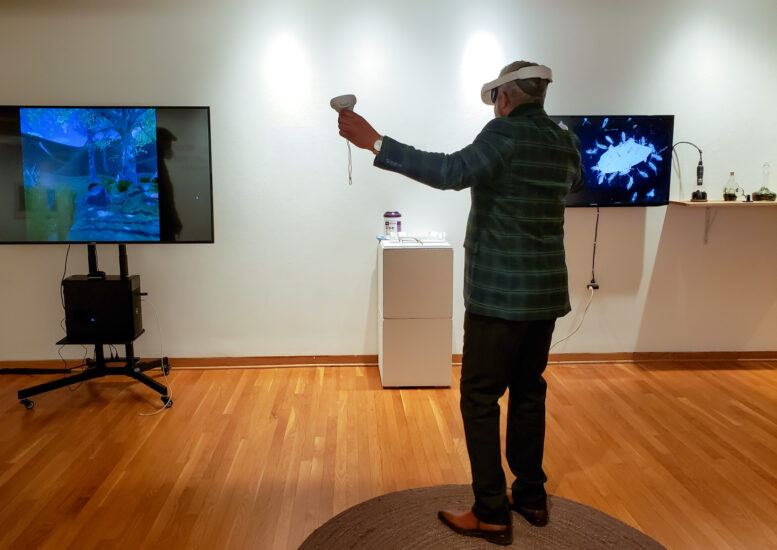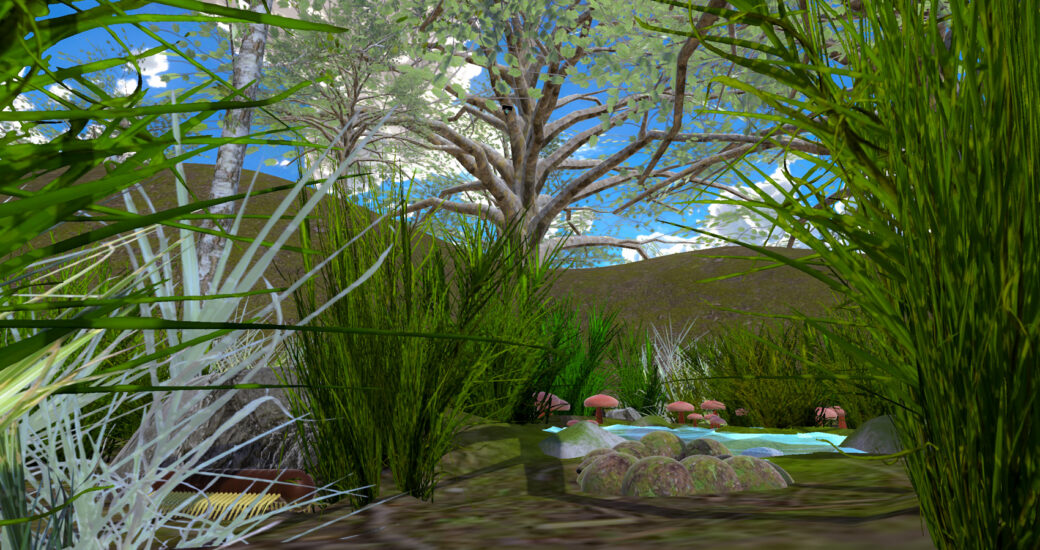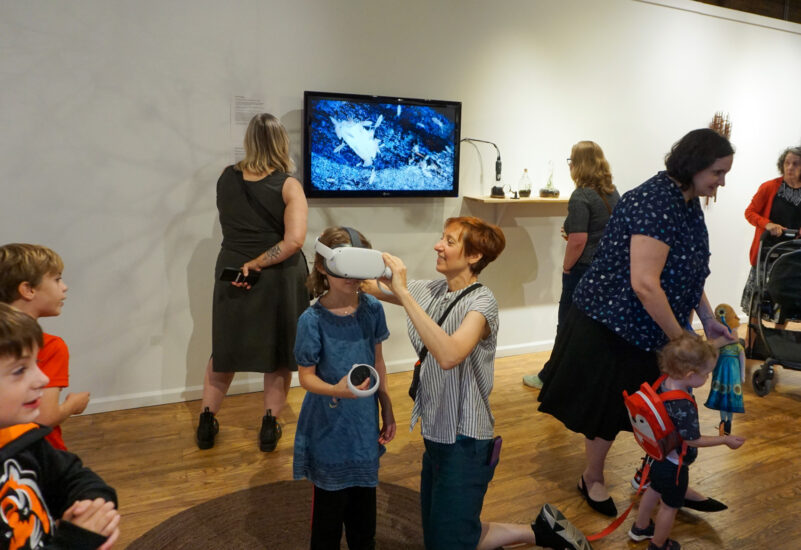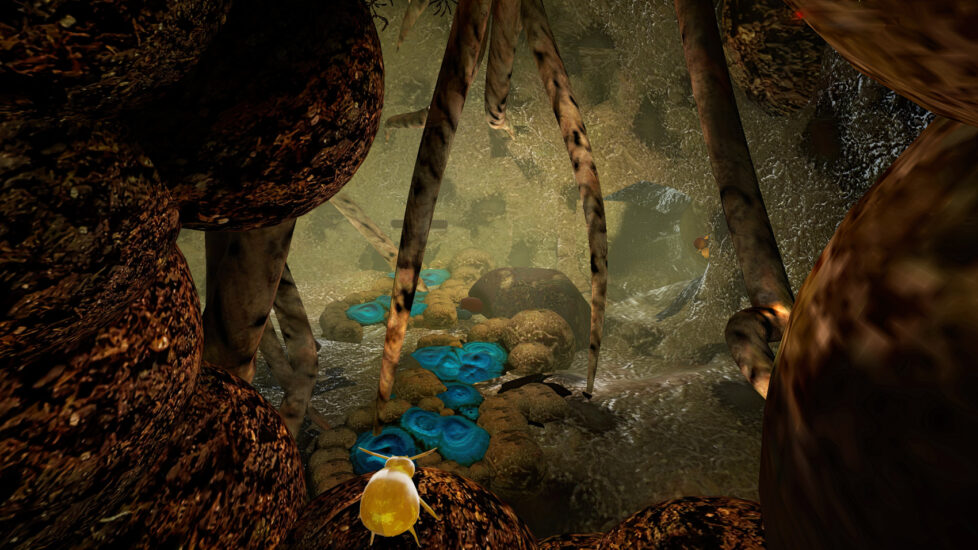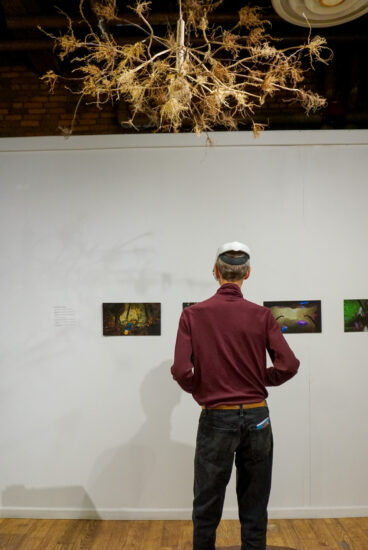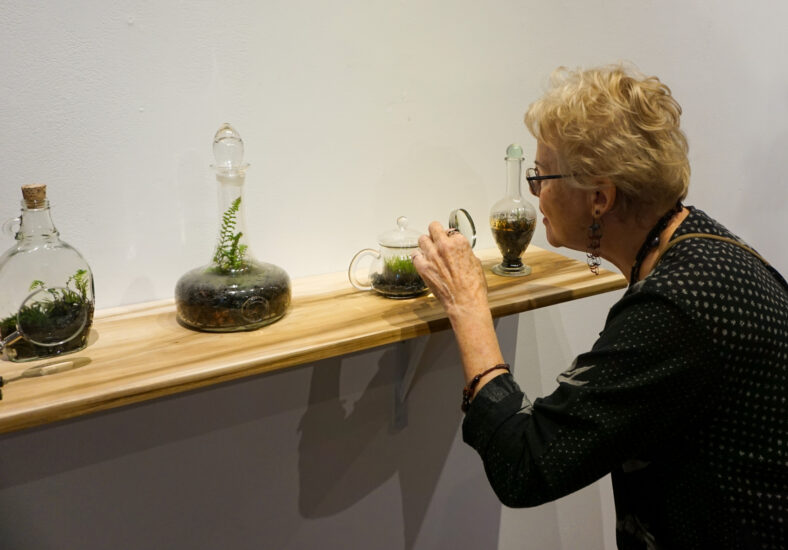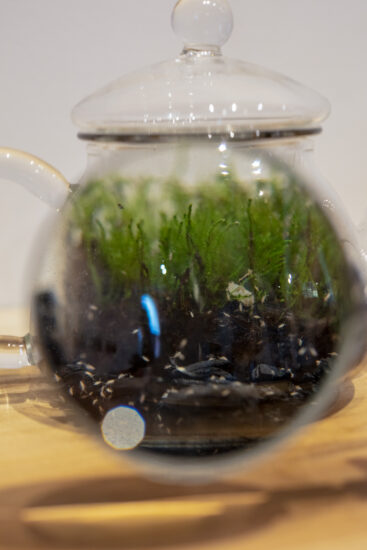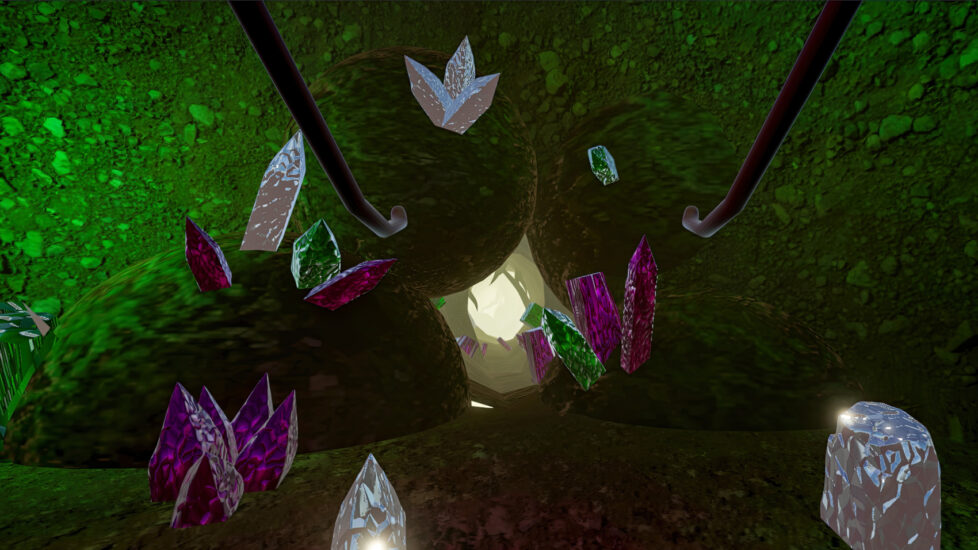How can we see under the surface – and get inside of soil?
This virtual reality experience is based on an important ecological reality. The intricately interwoven ecosystem of soil contains billions of tiny creatures that our lives depend upon. How can we meet our friends who are doing the important work of absorbing waste and transforming it into healthy fertilizer that feeds the plants, which feed animals, like us? How can we see and experience these fascinating creatures who have complex, symbiotic relationships with each other?

Belonging to Soil is a simulation of the world of a springtail, a tiny creature living in soil ecosystems throughout the world. You inhabit the body of this arthropod avatar so you can travel as it does; riding on a flying ant to find new territory, leaping through the air to escape predators, swimming in a pond to catch and eat water bears, crawling underground to see the beauty there, exploring tunnels made by worms, eating sporulating soil bacteria, feeding on plant roots, and dancing with friends.
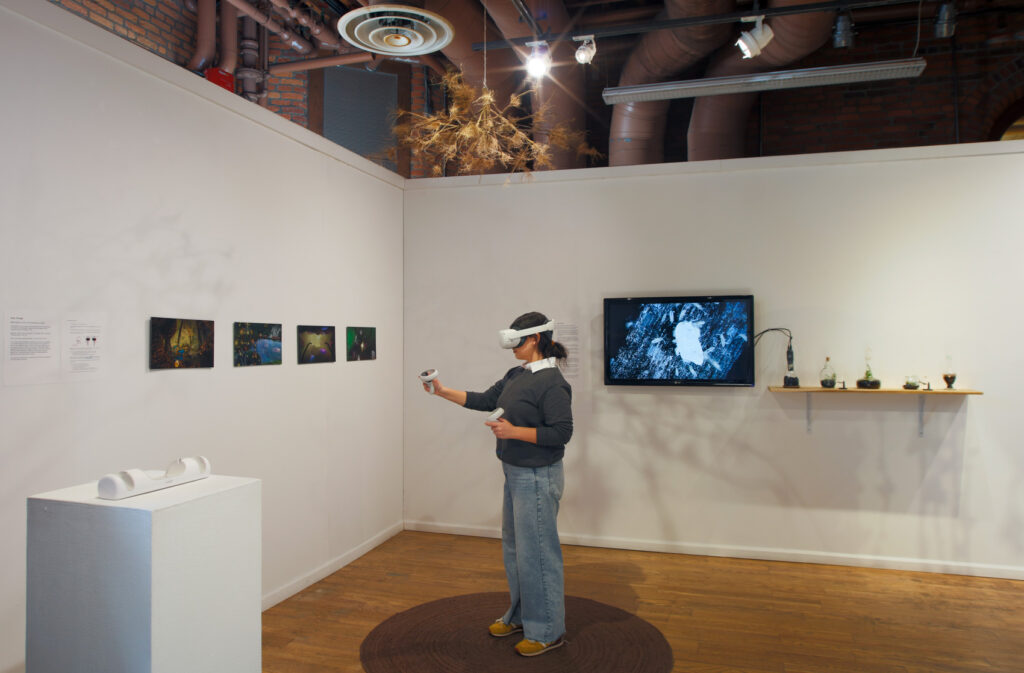
The world inside the headset may look and feel like fantasy, but it is based on scientific knowledge. The research for this project involved reading scientific papers about springtails and their interactions with others in the soil ecosystem, as well as the observation of live springtails over three years, which I have cultivated in a variety of terrariums. The cartoonish avatar does not even come close to capturing the complexity of the actual springtails I observed. Their quick movements, their air-sensitive hairs, and acrobatics were not technically possible to include in a virtual reality system that assumes a human is controlling it.
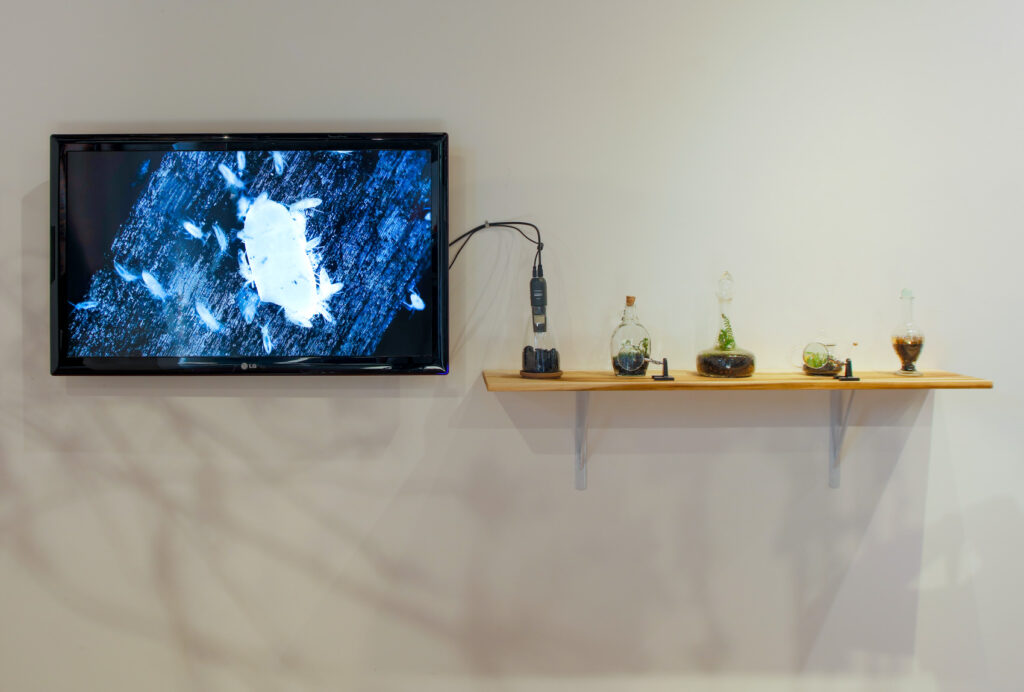
How would a human use their body to control six legs, plus two antennae, plus a furcula, which is the spring-loaded “tail” that activates their high-speed jumping? We don’t have enough limbs or even buttons on the virtual reality controllers to map to the actions of an actual springtail. It is humbling to attempt to simulate the operation of their bodies. It was also frustrating to working with a game engine that privileges two-legged, two-armed, upright-walking avatars. Our current avatar is a compromised in many ways: it walks upright, has only four legs, and its antennas are simply automated, not controllable. Nevertheless, we found ways to program the system so that users could experience jumping, eating, and “soil-making” (pooping) through particular body movements.
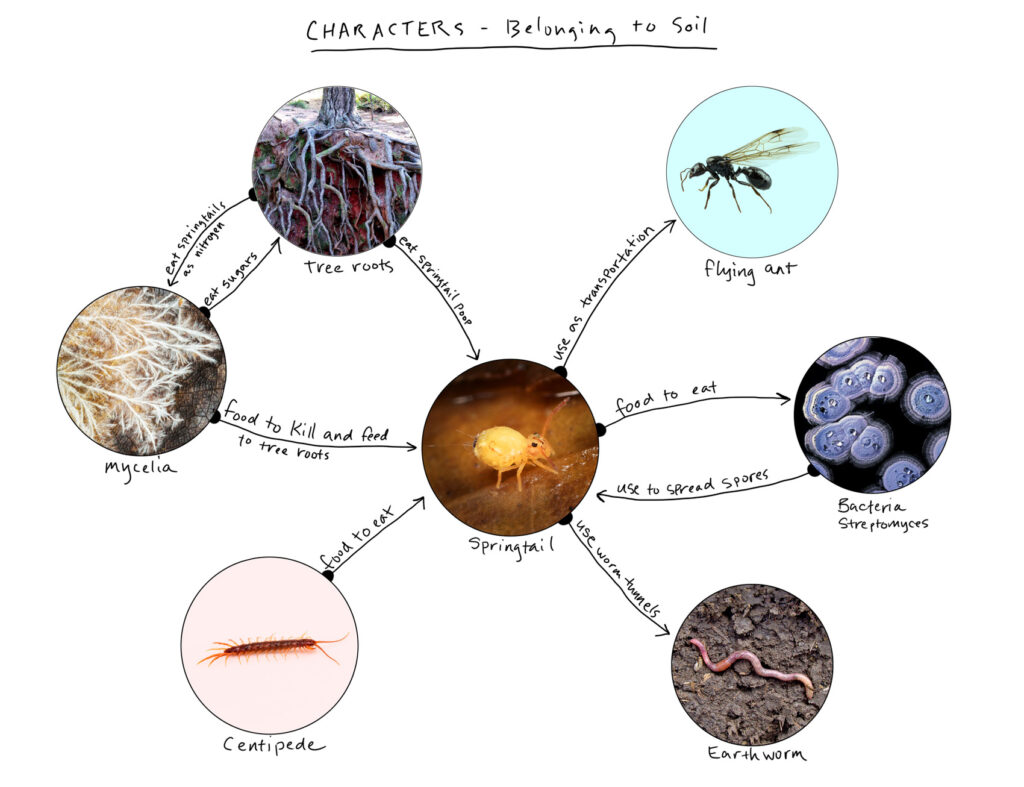
About Springtails
- They are arthropods, who have a spring-loaded jumping organ that allows them to “hyperspace jump” – up and away from predators.
- They help build healthy soils by grazing on fungi, bacteria, and decaying matter, and by turning these into nutrients that plants can eat through their roots.
- The “earthy scent” that often occurs after it rains is due to a symbiotic relationship that one type bacteria (streptomyces) have formed with springtails. The bacteria creates the scent to attract springtails, who help the bacteria by spreading their spores (kind of like seeds) throughout the soil where new colonies can grow. The springtails are rewarded by a meal of bacteria, who are in the last stages of their lives when they are producing their spores.
- Fossilized springtails have been discovered in amber, clinging to the bodies of flying insects, causing scientists to believe that this is one method they used to travel and populate most types of terrestrial environments.
- They come in many types and colors, but they are so small and are often underground, so you might never see them.
This project is supported by a grant from the Arts & Humanities at The Ohio State University.
